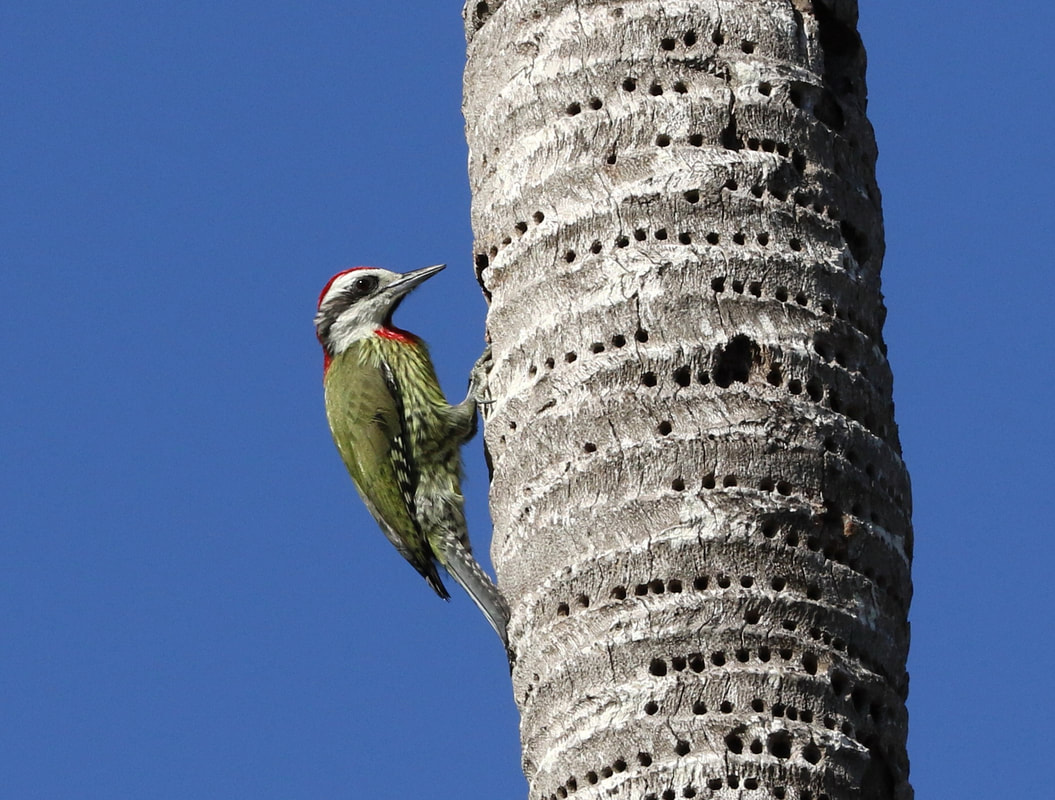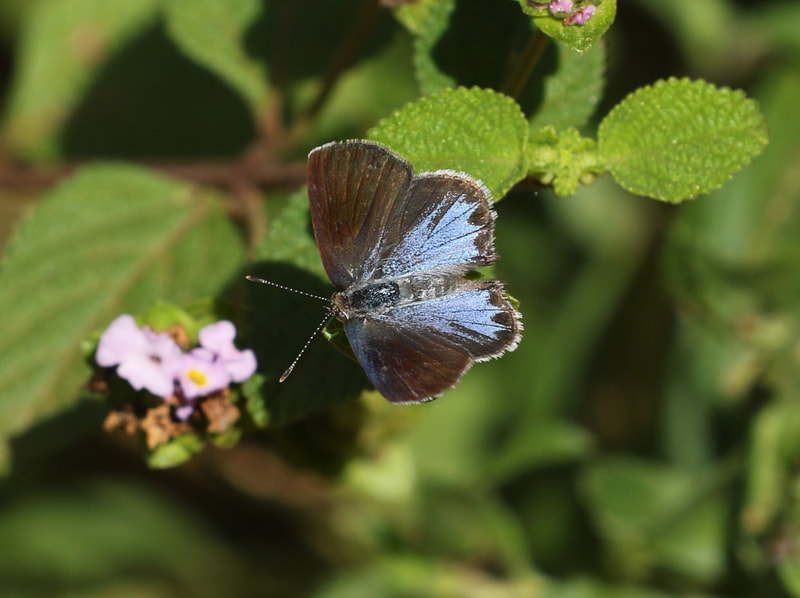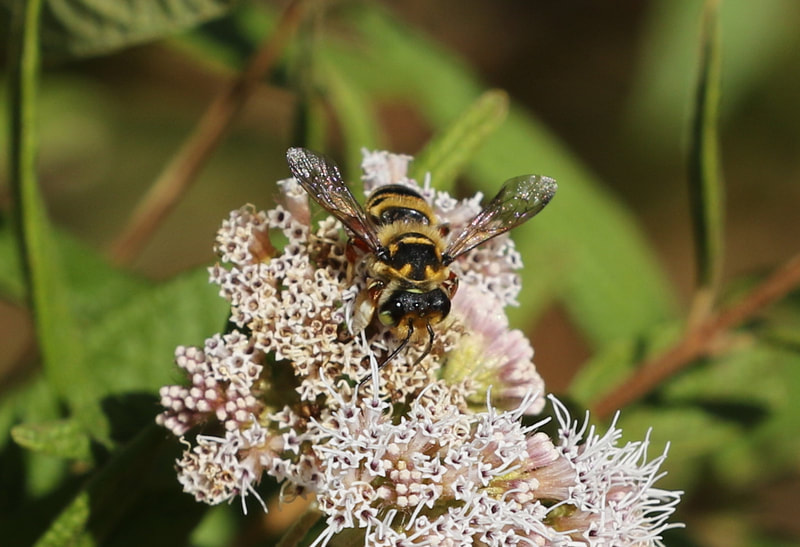|
Carlos had told us that he had recently seen a Yellow-bellied Sapsucker feeding on the tall palms at the front of the hotel so we went to have a look this morning. During the summer they are found in a wide band across southern Canada and northern US. They migrate south to spend the winter in southern US, Central America and the Caribbean. There was plenty of evidence that they have fed here over the years as several of the trees had the distinctive extensive bands of holes drilled where they had been feeding on the sap from the trees. But this morning there was no Sapsucker and only the endemic Cuban Green Woodpecker. We then took a taxi for the morning and went first to the beach just east of Guardalavaca. This is the nearest site that we know for Mangrove Buckeye Junonia neildi and it wasn't long before we saw them among the Black Mangrove Avicennia germinans. In flight they look very different from Tropical Buckeye Junonia zonalis as they lack the whitish band across the forewing and look all orange-brown. We also found Miami Blue Cyclargus thomasi an Antillean Crescent Antillea pelops which was our 100th butterfly species for the trip and the first of five new species today. Another exciting find was a pair of Tiger Beetles Cicindela sp. We've never seen any of the group in Cuba before and so far I haven't found anyone who can identify them. We then went off to a little village called Cuatros Caminos just to the south that has proved to be quite good for butterflies in the past and it was again today and we saw some nice things including four new species for the trip though most were rather worn or I only managed a poor photo. The good thing about the place is that there are lots of nectar sources, mainly Lantana but other things too. The Lantana was also a good source of food for warblers including this Prairie Warbler. Like the Northern Mockingbird yesterday the Ovenbird was very agitated about something on the ground - maybe another snake or perhaps a cat. The other new butterfly species that we saw today were Dusky Emperor Asterocampa idyja, Violet-banded Skipper Nyctelius nyctelius, Grey Ministreak Ministrymon azia and finally an Amethyst Hairstreak Chlorostrymon maesites. This last was most surprising as it is rare and as far as I was aware it has only been seen in the west of Cuba, we have only ever seen it before at the Guanahacabibes Peninsular. I spotted it from some distance nectaring on a Chromolaena and took a couple of shots as a record but as I moved a little closer it flew and we couldn't relocate it. It is not surprising that it occurs in the east too as it is seen on Hispaniola. And having never seen Lantana Scrub-Hairstreak Strymon bazochii before this trip we saw two more today so that's on three out of the last four days that we have seen them. The Frangipani Plumeria sp were flowering beautifully in hotel garden and the scent in the evenings was gorgeous. They are pollinated by Sphinx moths with their long tongues but in fact they are tricked by the plant as they produce no nectar. I spent a few minutes today photographing the bees nectaring on the flowers at Cuatros Caminos and will Julio Genaro get to identify them if the pictures are good enough.
0 Comments
Leave a Reply. |
Welcome to our Blog
Here we will post interesting news about what we and others have seen in Cuba. Archives
July 2024
Categories |























 RSS Feed
RSS Feed